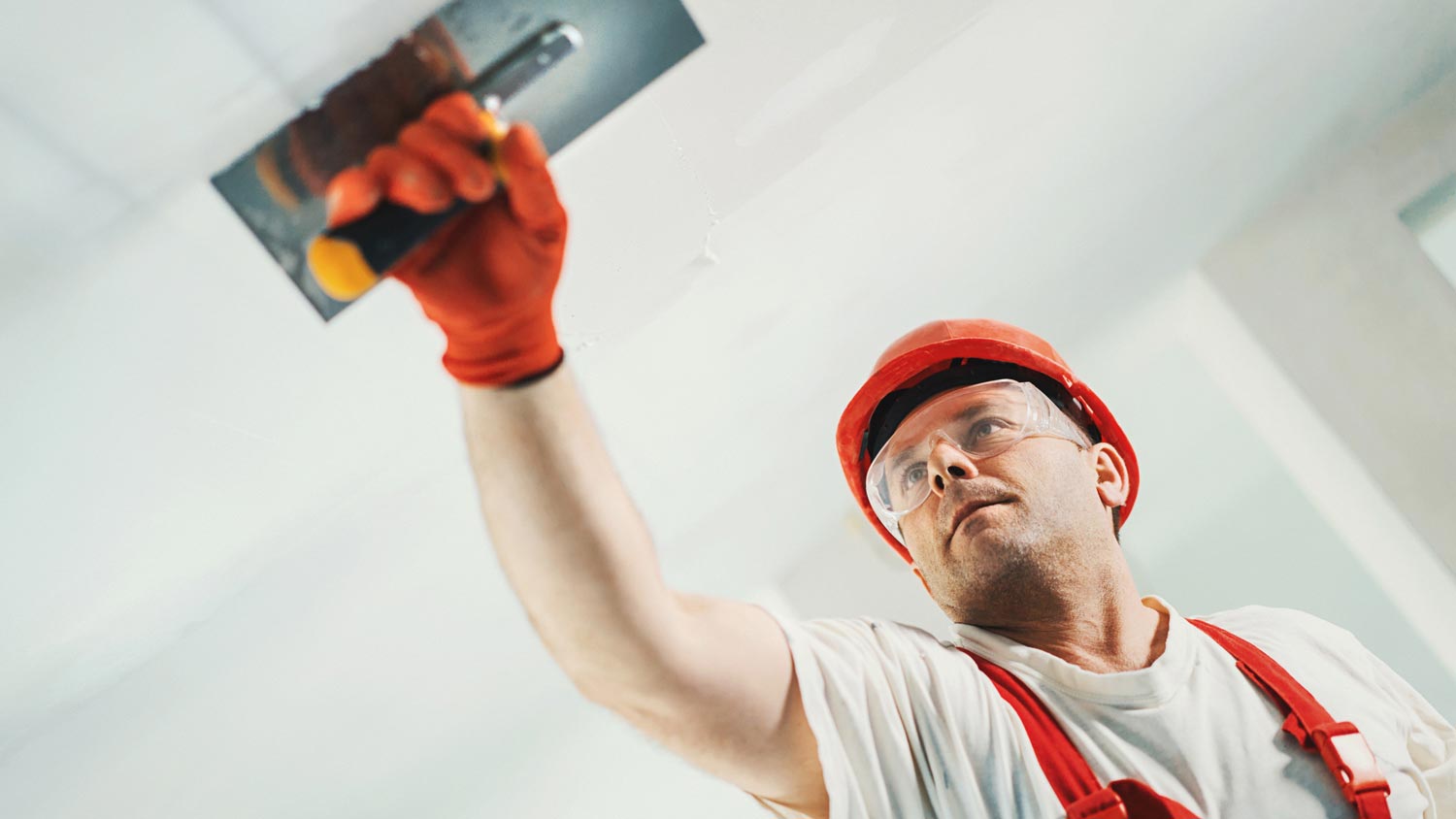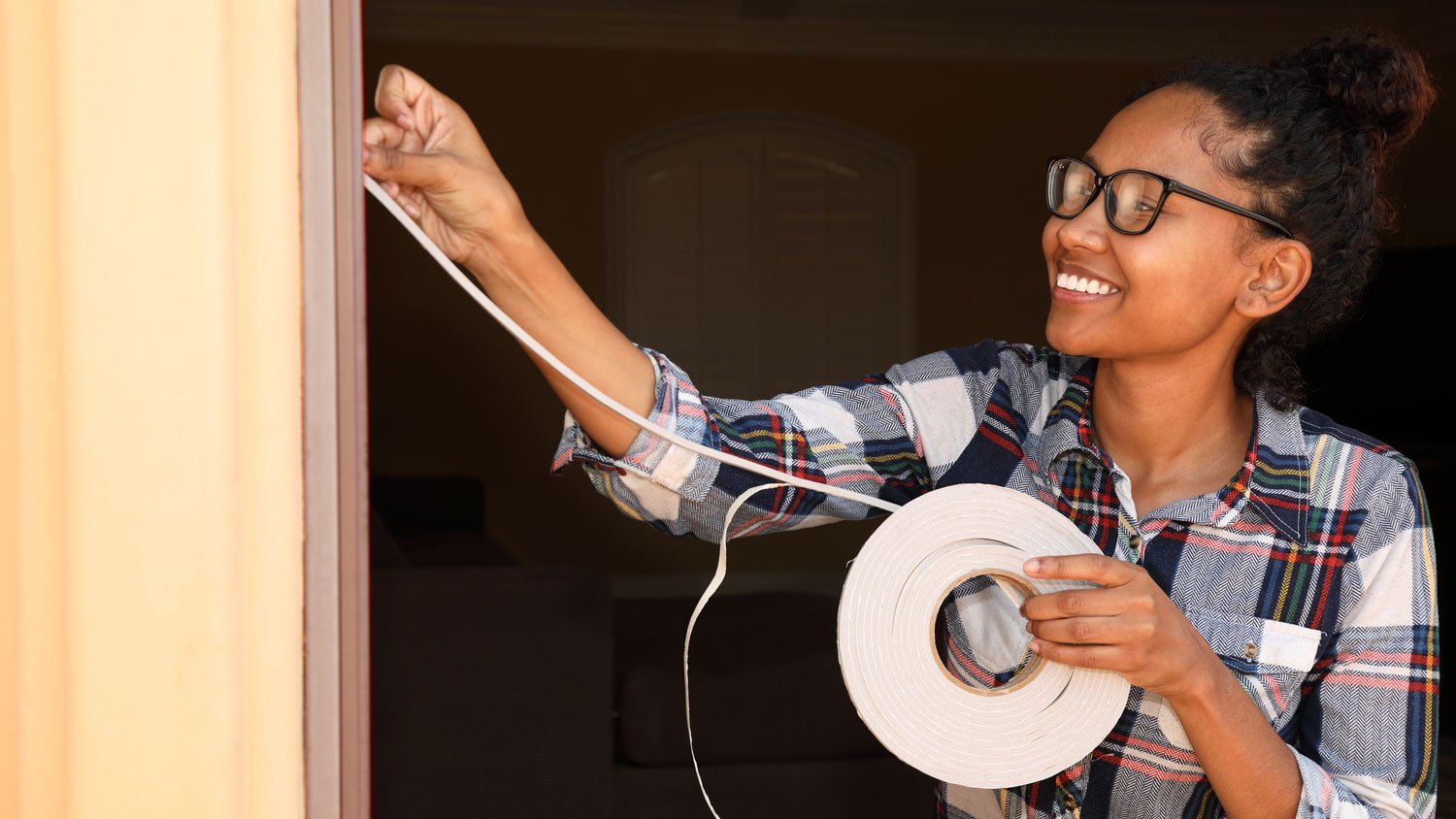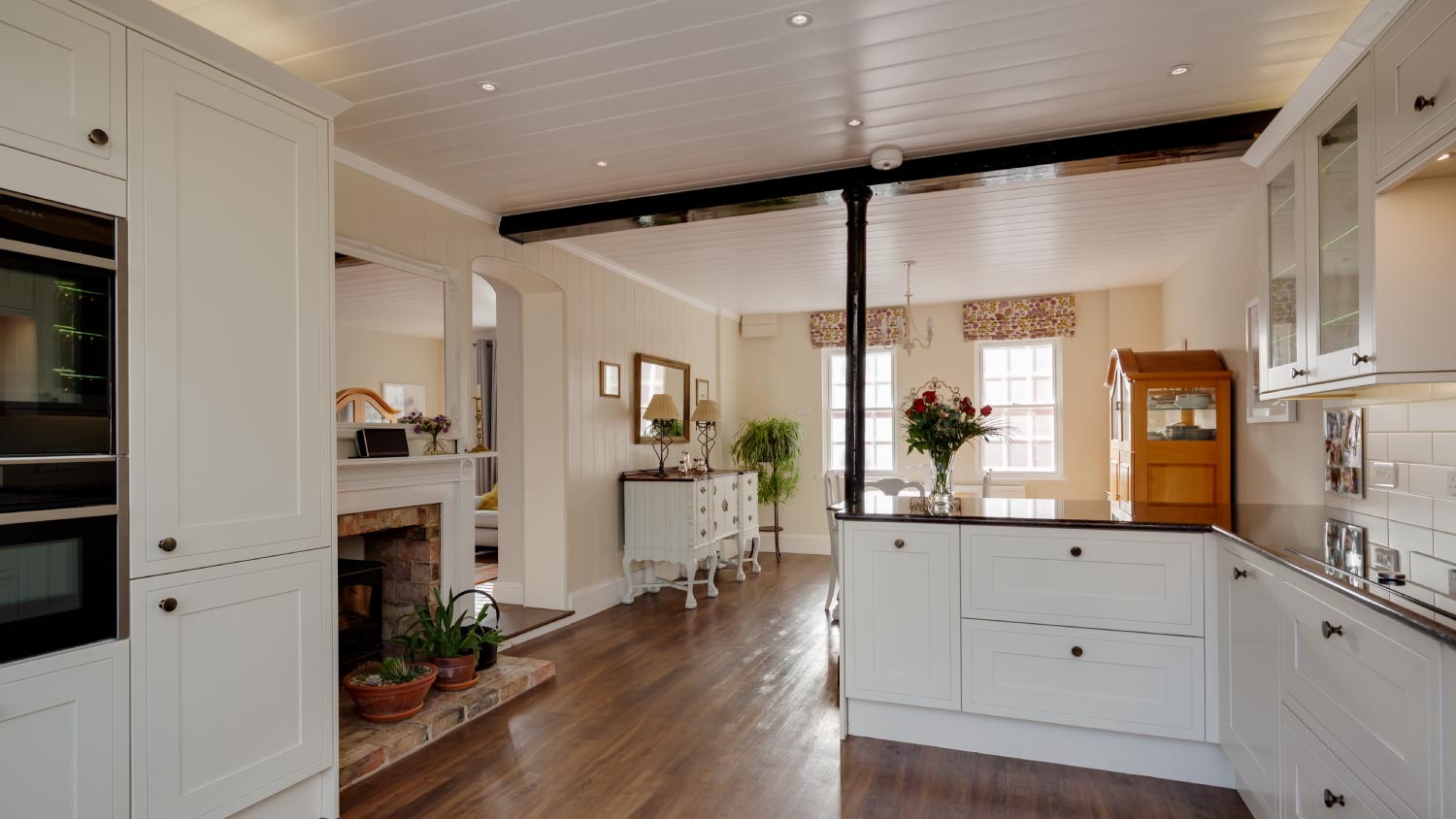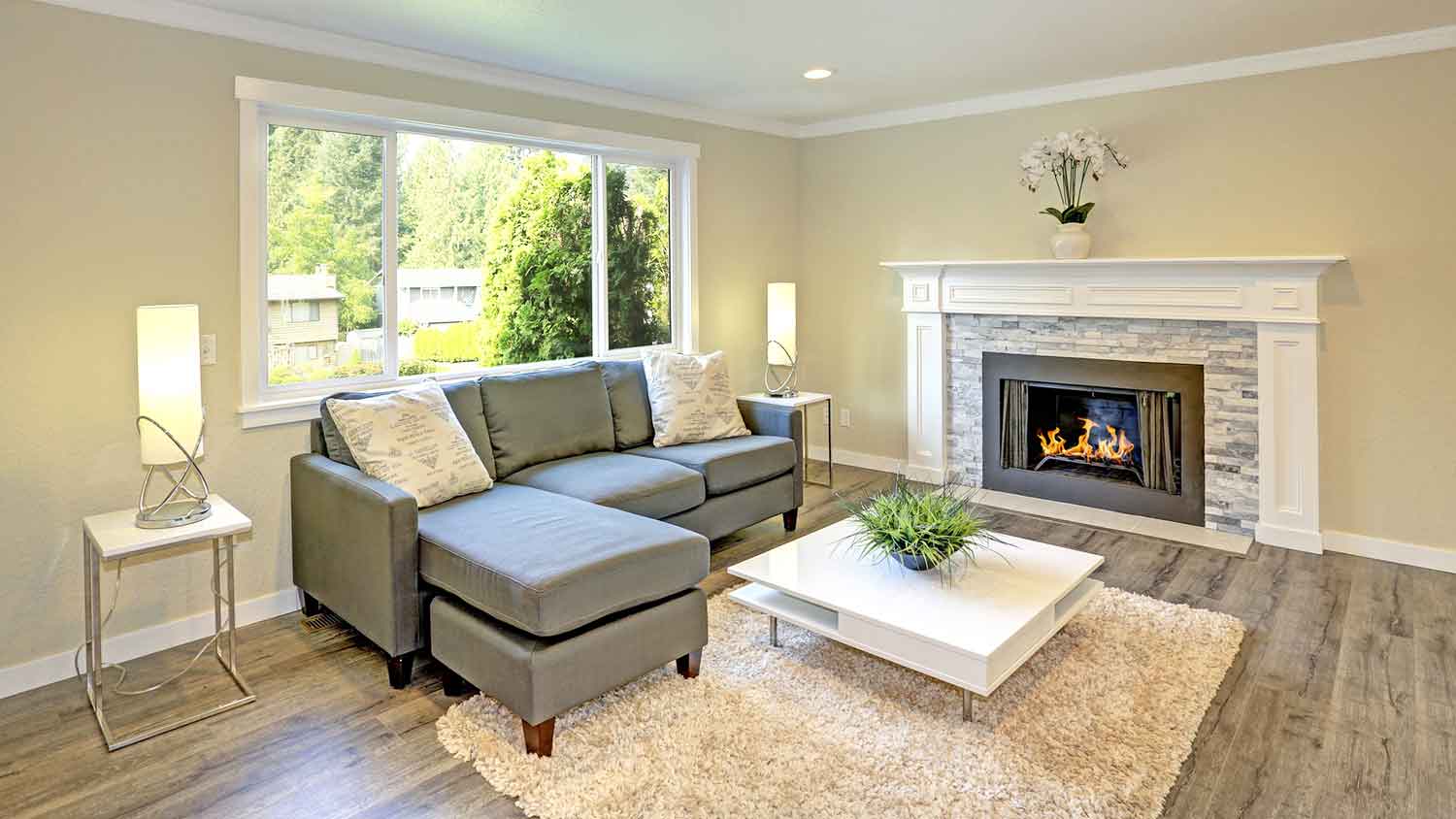
Skim coating drywall is a great alternative to replacement, and is often more affordable. Use this guide to estimate the cost to skim coat walls in your home.
Catch a break from extra noise with these soundproofing upgrades


Soundproofing can help you block out noise from an existing space.
While it’s common to soundproof walls, you can also apply materials to doors, windows, and floors.
The average cost to soundproof a room is about $1,865.
Although most of us enjoy the peaceful sound of quiet, noise is inevitable—both inside and outside your home. While some sounds are ambient, such as the refrigerator running or microwave beeping, other noises can cause interruptions in work, sleep, or just relaxing. If you are moving forward with a home remodel, it’s worth asking your contractor about the option of adding soundproofing to some walls. Since things will likely already be torn apart, a remodel or renovation is often the best time to include additional noise-reduction methods.
Soundproofing is a method used to block noise from either entering or exiting a space. While it can be difficult (and expensive) to truly soundproof a room, there are several ways to significantly reduce extra noise throughout your house.
If you’re looking to soundproof an existing wall in a home, there are several soundproofing materials to choose from. If you’re handy and comfortable working with the materials, it can potentially be a weekend DIY project. Otherwise, contact a soundproofing contractor near you to implement one of these methods. Here’s an overview of soundproofing material applications:
Drywall: Applying another layer of drywall over the existing wall can add extra soundproofing to a room. Some drywall brands offer thin-wall technology, which reduces noise without sacrificing floor space.
Insulation: Low-density cellulose insulation blown into the walls is a cost-effective way to increase sound absorption.
Mass Loaded Vinyl: Thin, rolled sheets of mass loaded vinyl (MLV) can be installed against existing drywall to absorb sound and decrease noise.
Paneling: Foam or fabric panels can be installed on walls as quick, less-permanent soundproofing methods to help muffle extra noise.
If you’re new to soundproofing techniques, you may be confused about soundproofing versus sound-dampening solutions. Although they are similar concepts, knowing how they differ can be the key to creating a comfortable acoustic space.
Soundproofing prevents sounds from escaping or entering the room. These techniques are best for keeping out traffic noise or making sure the neighbors don’t hear your teen’s band practice. Ultimately, soundproofing is best if you want to reflect sound back into or away from a room. Installing soundproofing insulation and drywall can help soundproof the space.
Sound-dampening techniques reduce noise within a space. Without sound-dampening measures, sound can bounce off surfaces in the room and reverberate back into the space causing acoustic discomfort. To reduce sound reverberations, you can install acoustic panels or baffles, lay down rugs, install carpet, or apply textured paint.
Start by determining where your problematic noisy areas are. Can you hear conversations through a wall or footsteps above you? Sleuthing out where the noise is coming from will help you determine which walls (or floors and doors) could benefit from soundproofing.
Entertainment Room: If extra noise interferes with your favorite TV shows, consider soundproofing the walls in the room that houses your entertainment area. Similarly, if loud video game sounds are traveling to other areas of the house, soundproofing can help others from hearing every time you level up.
Home Office: Many people work and learn from home, so a quiet space is essential. Soundproofing the walls in a home office or multipurpose room can help reduce distractions and increase productivity.
Bedrooms: No one wants to be woken up suddenly by a backfiring car or other loud outside noise. Adding additional soundproofing to the bedroom walls can help everyone get a good night's rest.

While soundproofing various walls throughout your home can help decrease the overall noise levels, it’s also worth considering additional measures and areas for further sound reduction.
Upgrading to double- or triple-pane windows can help prevent extra noise from entering your home. This can be especially helpful if you live close to train tracks or a highway. Another option is to add storm windows, particularly in the winter months. The average cost to soundproof a window is $300 to $1,500.
While you can purchase soundproof doors at many big box stores, there’s also an easier DIY trick. Adding weather stripping or another soft foam stripping to cracks or gaps along the door frame can reduce noise. Depending on the method used, soundproofing a door can cost anywhere from $50 to $450.
The quickest and easiest way to create a sound barrier on floors is to add rugs or carpeting, which help absorb noise. Another option is installing mass loaded vinyl, which creates a sound barrier. Soundproofing solutions for floors cost ranges from $100 to $1,000.
Both air and noise can escape through even the smallest cracks or gaps, so sealing them up is an effective way to soundproof. Apply caulk or putty to any visible cracks, then smooth the finish, and add a layer of paint if needed. Sealing holes and cracks yourself to add soundproofing runs between $15 and $75.
Adding soundproofing drywall and insulation to walls and ceilings can prevent noise from entering or escaping the room. Either option can help maintain comfort throughout the home, especially if you live in a noisy neighborhood with a lot of traffic. Soundproofing a ceiling costs between $5 and $20 per square foot, while soundproofing walls costs between $1 and $10 per square foot.
The average cost to soundproof a room is about $1,020 to $2,720. This breaks down to roughly $10 to $30 per square foot. Prices depend on the size of the room, where you live, the cost of materials, and the complexity of your project. If you already have a contractor remodeling certain areas, they may charge less to soundproof walls or ceilings that are pre-drywall.
Deciding whether to DIY a soundproofing job or hire a pro depends on your comfort level with installing soundproofing materials and the type of materials you choose. Some materials, like insulation and drywall, take some technique and skill to install and may be best left to a pro. Others, like sound absorption panels or rugs, are much easier to install or simply lay down in the space and can be done quickly.
An advantage to hiring a soundproofing contractor is their ability to determine whether you need soundproofing or sound-dampening methods to create a comfortable space. If you’re worried about outside noise, you’ll need to choose different materials than if the inside area echoes too much. A pro can guide you through the options to make sure you’re not wasting time on the wrong methods.
From average costs to expert advice, get all the answers you need to get your job done.

Skim coating drywall is a great alternative to replacement, and is often more affordable. Use this guide to estimate the cost to skim coat walls in your home.

Installing beadboard ceilings is a great DIY project. Learn what to expect cost-wise from this project, whether removing or covering a popcorn ceiling.

Installing drywall is the most common way to finish your home’s interior. Use this drywall installation cost guide to see what your project is likely to cost.

Learning how to sand drywall and drywall mud requires using one of a few different techniques. Use our guide to learn more about your options.

Don’t forget about room corners in your plans for smooth, seamless walls. Learn how to drywall corners like a pro with this step-by-step guide.

Whether you’re renovating a room or finishing a home addition, this guide on how to cut drywall will make your job easier and help keep your home neat.